Kia Sportage 2025 review
Kia’s Australian best-seller gets a mid-life facelift to make it prettier and better to drive, with extra equipment and new Hybrid AWD variants
As far as generational evolutions go, the transformation of the Kia Sportage from the 1990s to now has been a textbook rags-to-riches tale.
From terrible handling and an appalling ANCAP crash-test performance back in 1997 to this, the fifth-generation Sportage (launched in November 2021) that has become the brand’s top global seller and both a critical and commercial hit.
Good points
- Superior steering tune
- Excellent hybrid powertrain
- Terrific handling balance
- Tonnes of space
- Well-controlled ride quality
- Useful equipment upgrades
Needs work
- 1.6T engine tune lacks muscle
- 2.0-litre’s mediocre fuel efficiency
- No seat cooling for vinyl SX+
- No entry-level Hybrid variant
- Too-thick steering wheel spokes
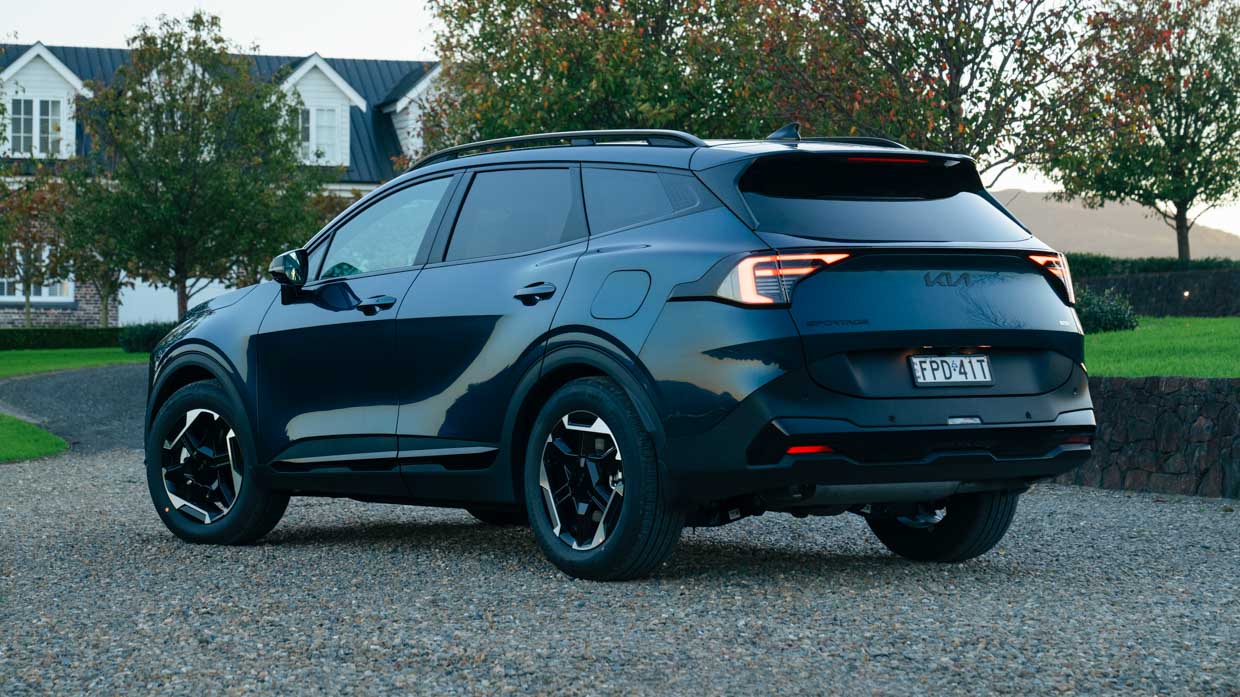
By deciding to offer the fifth-gen (NQ5) Sportage in two different wheelbase/body lengths to suit different markets, along with a full deck of drivetrain types, Kia has nailed the zeitgeist for mainstream medium SUVs.
And in Australia, its breadth of variant choice, vast interior space and suitability to our roads has resulted in well-deserved popularity – a best-ever sales performance (22,210 units) and a Top 10 finish in 2024.
Being the last remaining mainstream medium SUV available as a diesel (in all four trim levels) has helped as well, with the flagship GT-Line Diesel AWD currently ranking number one in variant popularity among the Sportage family – hence why the GT-Line has received considerable attention in this MY25 mid-life facelift.

Across-the-board changes include more geometric front-end styling and wheel designs, a cleaner interior aesthetic with a new dashboard (and the removal of cheap gloss-black finishes), latest-gen infotainment, a new electric steering tune, Kia Connect app connectivity with over-the-air updates, an eight-speed auto for the 1.6 turbo-petrol, new AWD variants for the more powerful Hybrid drivetrain, extra equipment in all trim levels, and new colours (Heritage Blue and Wolf Grey).
Visually, it’s easy to identify the facelifted Sportage from front on because it loses the boomerang-shaped DRLs of the old model and switches to stacked vertical lighting instead – as debuted on the electric EV9 and since featured on the facelifted Sorento large SUV.
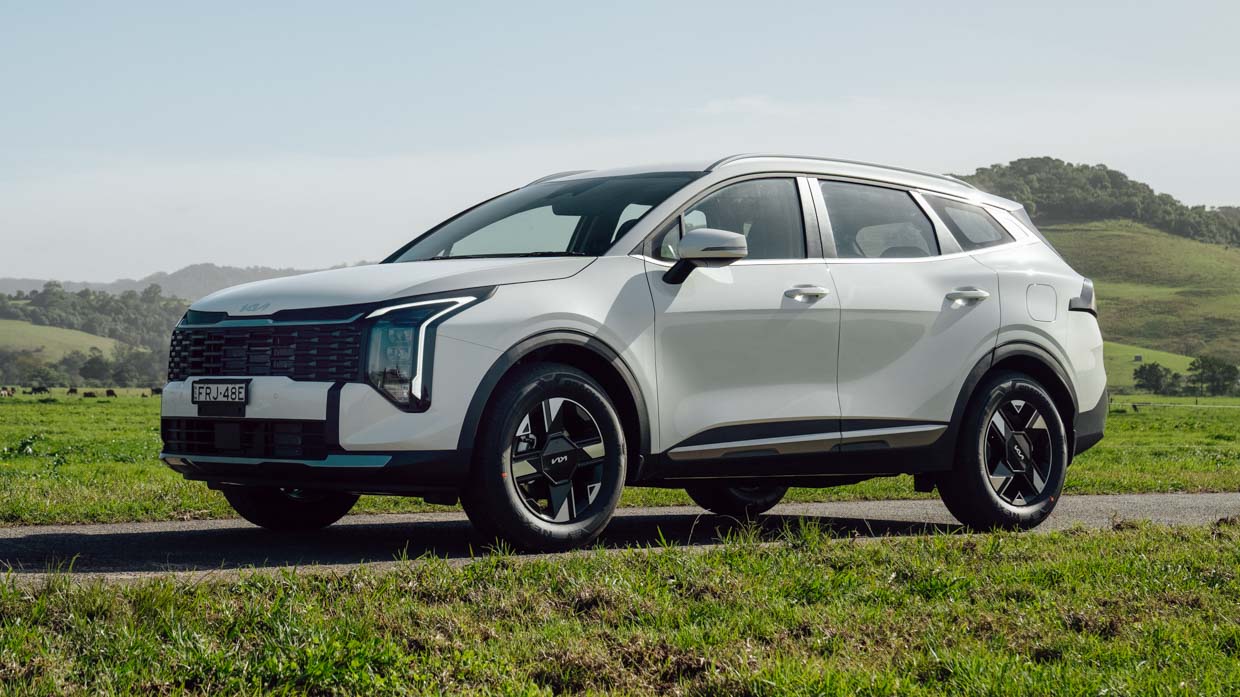
Pictured: the Sportage S
Variant-specific upgrades include three-cell LED headlights, push-button start, a 12.3-inch touchscreen, an emergency SOS button, and front parking sensors for the entry-level Sportage S – starting at $37,990 (before on-road costs) as a 2.0-litre six-speed auto (the six-speed manual has been discontinued).
Sportage SX scores wireless Apple CarPlay/Android Auto (only the S had this before), as well as the above additions and a new AWD option for the SX Hybrid, while the SX+ gains 19-inch machined alloy wheels, wireless phone charging, a heated steering wheel, and highway driving assist.

Pictured: the Sportage SX hybrid
The GT-Line builds on that with new black 19s (except for the Hybrid, which has 18s), four-cube LED headlights, dynamic welcome lighting, a head-up display, an AWD Hybrid option, and remote smart park assist for all GT-Line drivetrains.
Yet the most significant update to the fifth-generation Sportage – particularly if you enjoy driving – is its new Australian-developed electric steering tune.

Pictured: the Sportage GT-Line hybrid
Owing to development/travel restraints during Covid, the fifth-gen Sportage previously featured the global EPS tune, not a specific Australian tune to complement its Aussie suspension componentry. And while this steering change for MY25 seems belated, it has definitely been worth the engineering effort.
The Sportage’s revised steering delivers crisper, more consistent feel – with less muddiness than before – and changes direction with greater effortlessness, despite being more communicative.
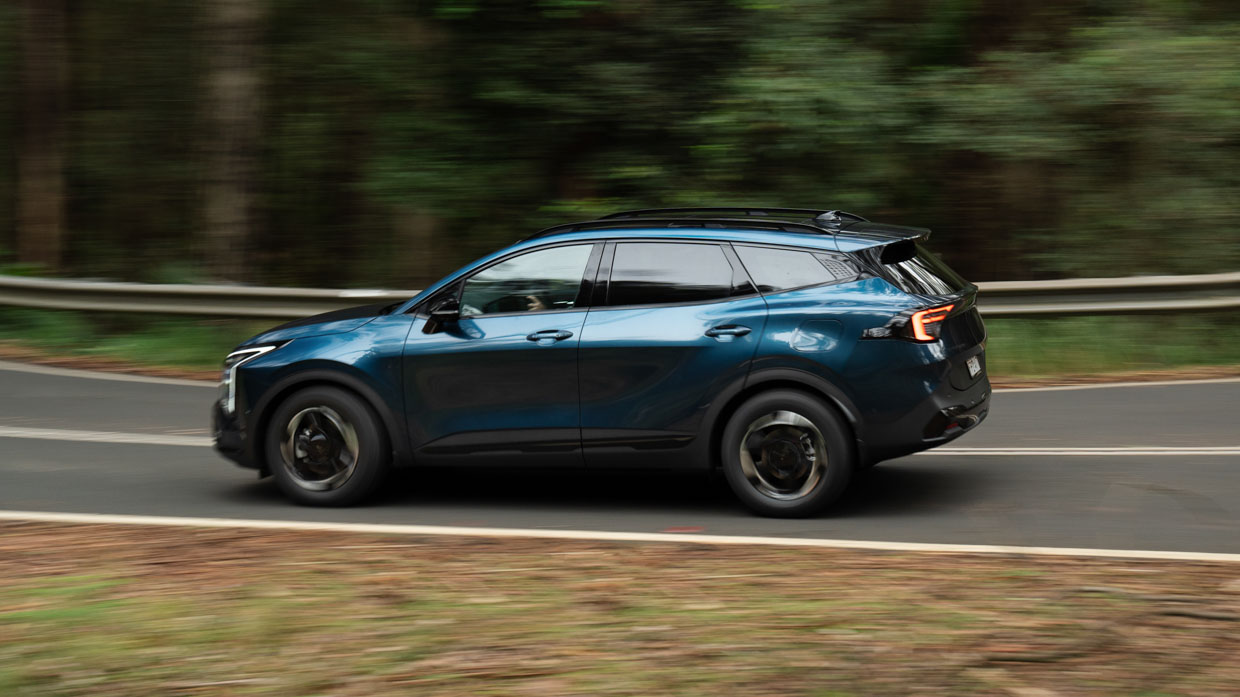
It now blends seamlessly with the way the car handles and ensures that the Sportage remains one of the most rewarding and sophisticated medium SUVs to drive.
While drivetrain changes have been minimal, our favourite – the Hybrid – has been given the most attention.
There are now two AWD versions to supplement the front-drive SX and GT-Line Hybrids, and the powertrain itself now produces 173kW (up 4kW) and 367Nm (up 17Nm). Combined fuel consumption remains at 4.9L/100km for the FWD, or 5.3L/100km for the new AWD.
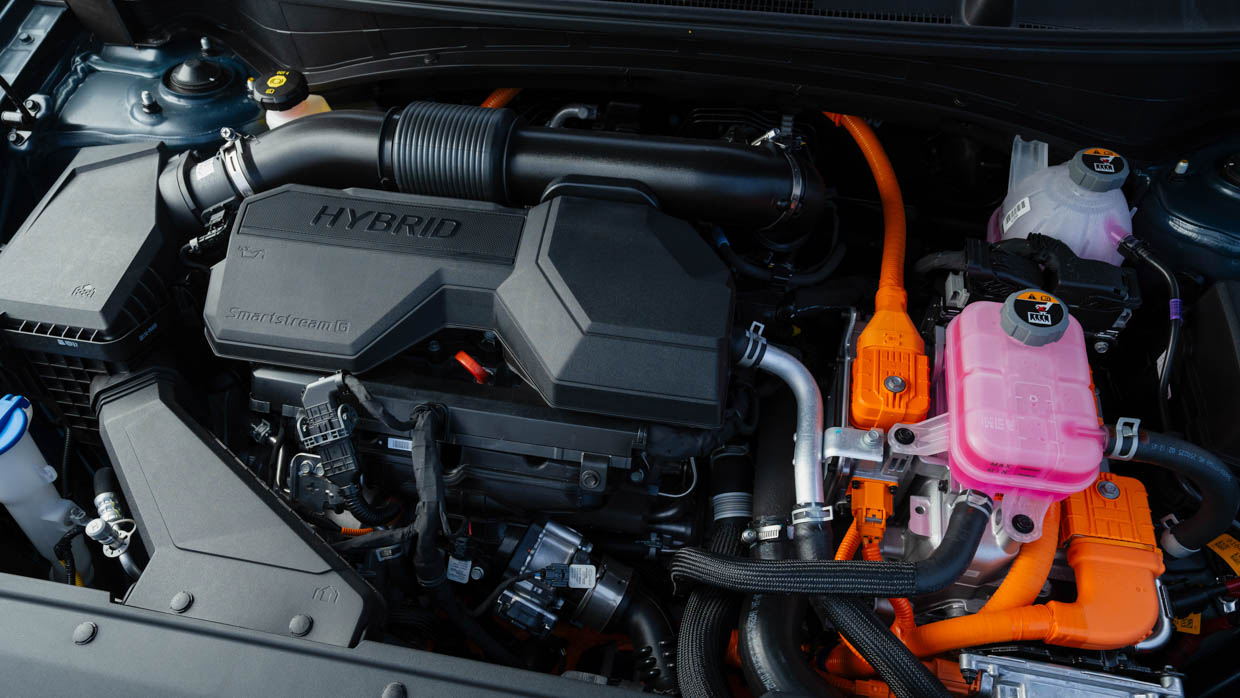
Effortlessly responsive without being shove-you-in-the-back quick, the Hybrid is easily the smoothest and most sophisticated Sportage powertrain on offer.
Locating its 37.5kg lithium-ion battery beneath the rear seat seems to underline that impression, making the Sportage Hybrid the best-balanced handler as well, while suffering minimal weight penalty.
Given that the front-drive Hybrid (wearing 18-inch wheels with 235/60R18 Nexen tyres, regardless of trim level) already has decent traction, the AWD version only really elevates itself in challenging driving or poor weather conditions.
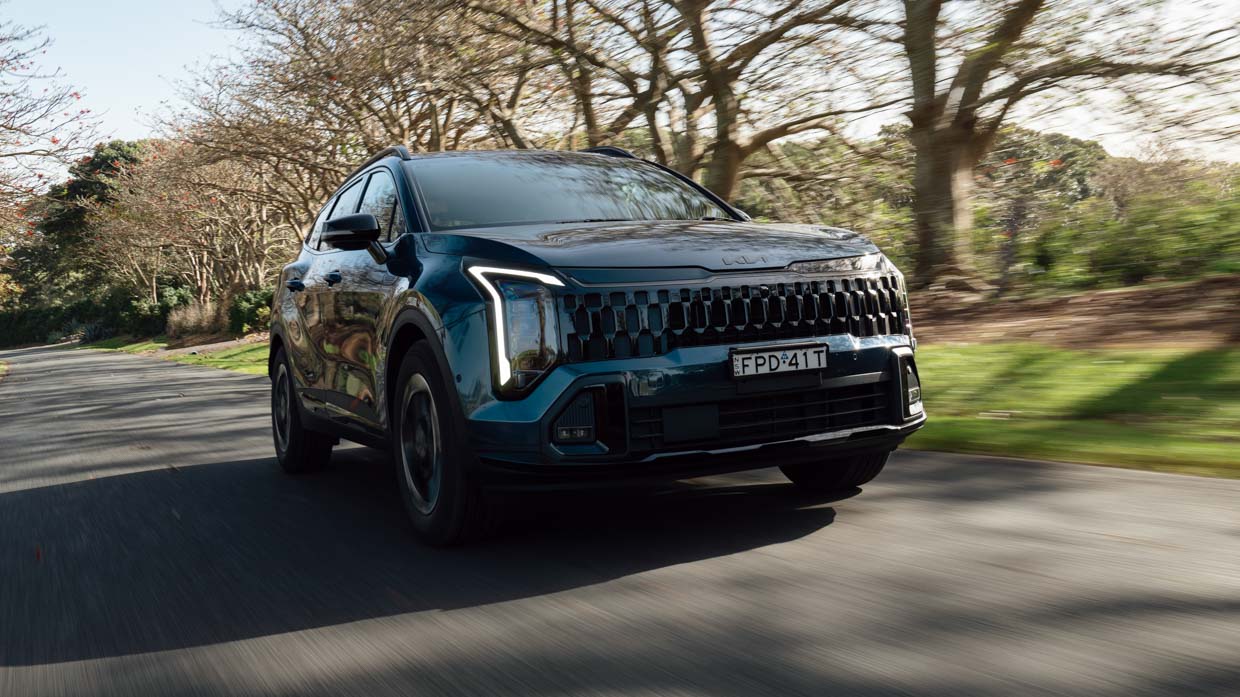
That said, Kia expects the AWD to account for 60 percent of Australian Hybrid sales, and for the Hybrid variants to deepen their model-split penetration – previously 20 percent for the front-drive-only MY24 Hybrid.
The torquey 137kW/416Nm 2.0-litre turbo-diesel AWD, tied to a nicely polished eight-speed torque-converter automatic, carries over from before, meaning strong grunt and a decent 6.3L/100km combined fuel figure.
The ageing 115kW/192Nm 2.0-litre multi-point-injected petrol also lives to see another day – despite Kia admitting “its days are numbered globally” – though it’s so well-calibrated that it feels superior to many Chinese turbo-petrol offerings.
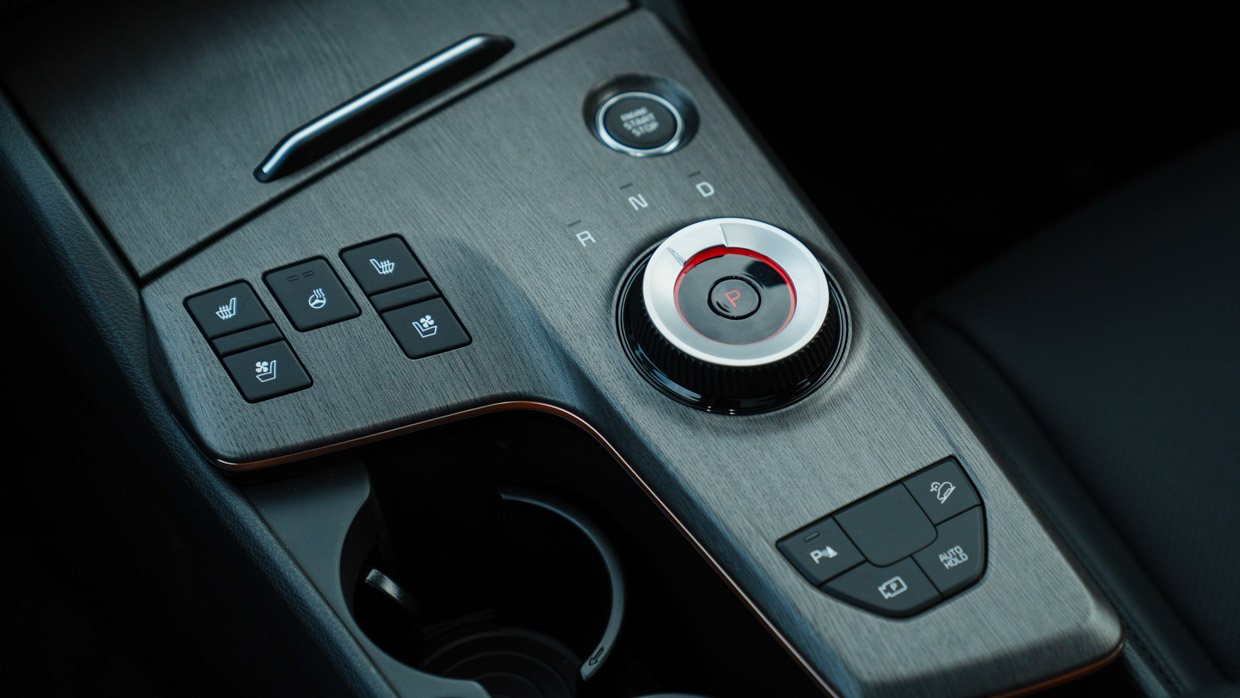
While the 2.0-litre six-speed manual has been canned, the six-speed auto seems mostly adept at choosing the right gear, as well as ringing everything it can from the engine when necessary, though its below-par 8.1L/100km combined fuel number betrays the engine’s age.
The 132kW/265Nm 1.6-litre turbo-petrol AWD remains unchanged for outputs but gains an eight-speed torque-converter automatic in lieu of a seven-speed dual-clutch (just like the MY23 Seltos did in late-’22) – promising a broader ratio spread and potentially greater durability.
Yet it feels little different to before – smooth but ultimately lacklustre, with a not-so-wonderful 7.5L/100km combined fuel-consumption figure using 91 RON regular unleaded (as with all Sportage petrols).

While the updated Seltos received a boost to 146kW and a useful refinement uplift, the 132kW Sportage 1.6T remains mired in conservatism, and its foot-flat performance reflects that.
Kia Australia is yet to work out what to replace the fleet-friendly 2.0-litre with, though it does have the option of adding a less expensive front-drive version of the 1.6-litre turbo in a lower spec level.

However, the more likely option is an entry-level Sportage S Hybrid, providing it can access enough volume from the Korean plant that also sends Sportage Hybrids to the US.
As for the rest of the car, the Sportage remains as appealing as ever, only more so thanks to its prettier styling and sweeter steering for MY25.

There’s an abundance of room and vision inside its all-charcoal cabin – meaning a dash of colour really wouldn’t go astray – as well as a tonne of boot space, particularly in the Hybrids with their space-saver spare wheels (and 586 litres).
Regular Sportages offer 543 litres but also full-size alloy spares, which Aussies love.
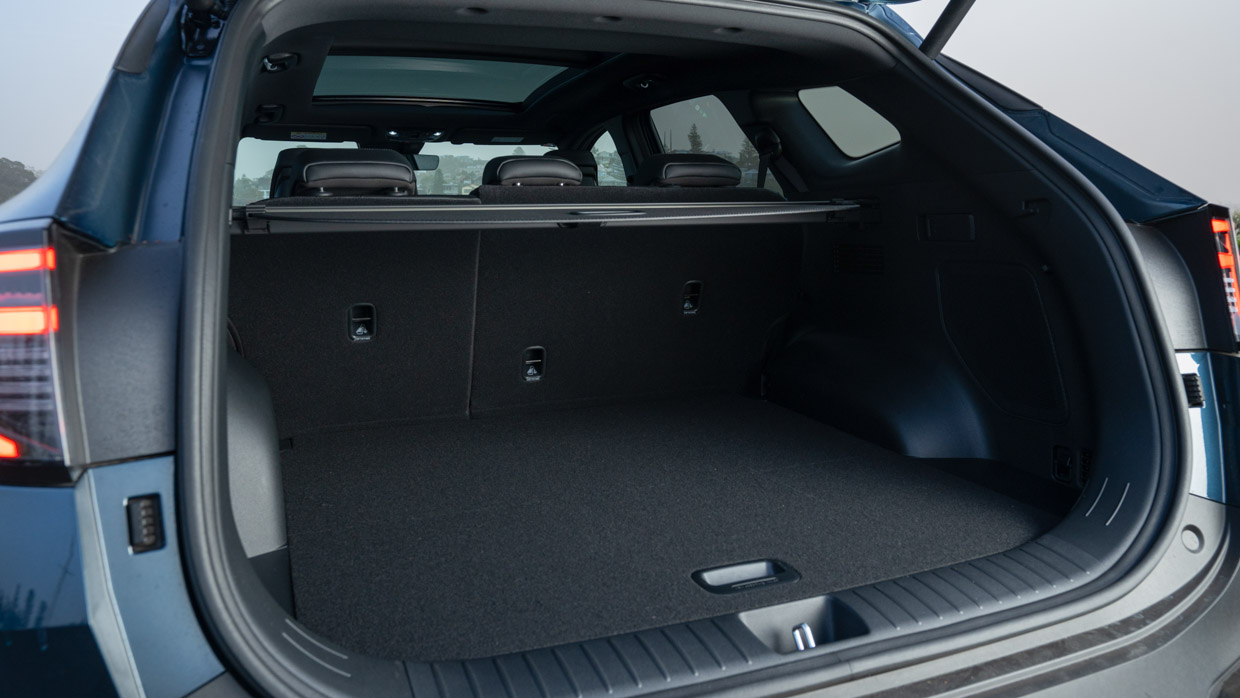

Some of Kia’s rather irritating active-safety systems remain, such as slightly overkeen lane-keep assist and steering assistance, especially with adaptive cruise control activated, though you can disable them with steering-wheel buttons.
And you can silence the speed-limit assistance by holding down the steering wheel’s volume dial to mute it.
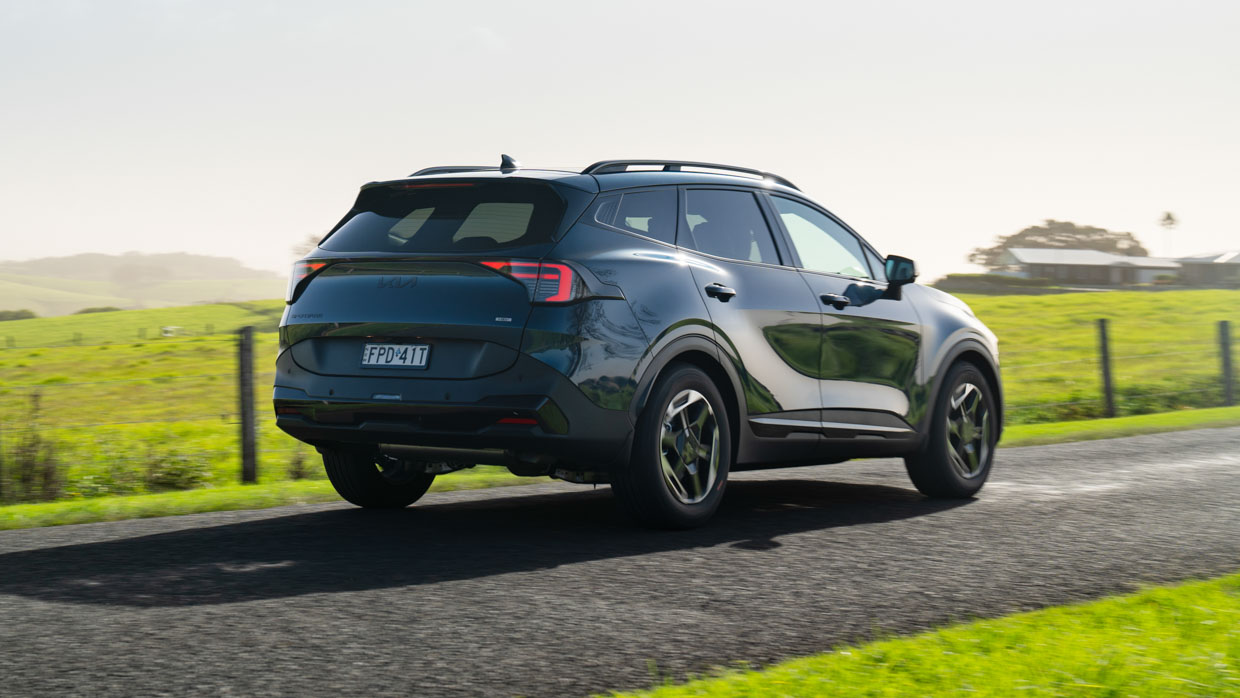
That said, this is little different to the increasing number of Chinese medium SUVs aiming for max spec for minimal dollars, minus any polished finessing.
What sets the locally tuned Kia Sportage apart from these competitors is the smooth sophistication of its overall calibration, the easy driveability of its multiple powertrains, and the overwhelming dynamic excellence of its Australian-developed suspension and steering.
Ford Ranger PHEV 2025: Australian first drive
4 months ago

Lower on specs, bigger on price – can the long-awaited plug-in hybrid version of Ford’s big-selling 4×4 ute compete with Chinese rivals?
Good points
- On and off-road refinement
- Nice interior layout
- Australian designed and engineered
- Simple mechanical latching tailgate
Needs work
- Limited EV range
- Slow charging
- Can’t fit an aftermarket tray or canopy
- Most expensive PHEV in its class
First and foremost, the 2025 Ford Ranger PHEV has been designed and engineered in Australia, which is confidence-building for what is essentially a new product. It really does say a lot. But it would be kind of nuts to think PHEV ute rivals in BYD Shark 6 and GWM Cannon Alpha haven’t received loads of local development too.
This level of refinement though is main reason Ford are keen to get us behind the wheel and experience the Ranger PHEV. Not just judge it based on specs.
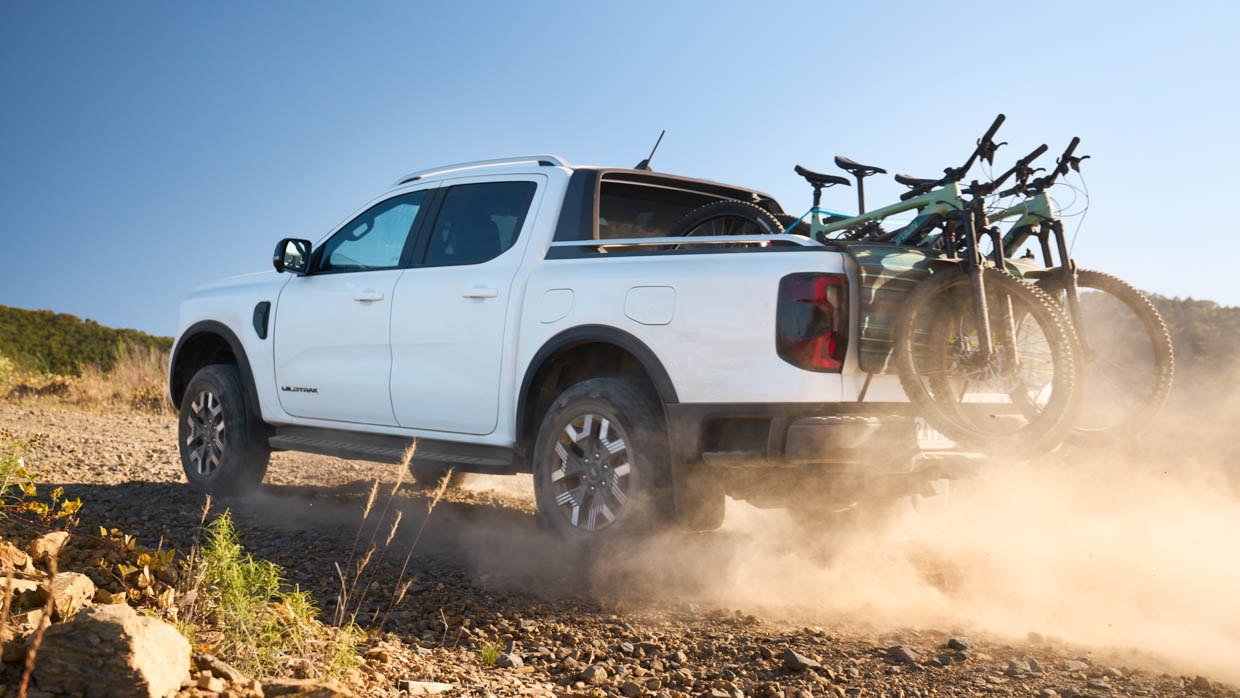
Speaking of specs, we’ve already put together a specs battle comparing the Ranger, BYD Shark 6 and GWM Cannon Alpha PHEVs on paper to see how they stack up.
When we do just look at the scoreboard, however, it is clear to see on paper the Ranger PHEV comes third place in a race of three. Especially being the most expensive vehicle in class, weighing against it during these challenging economic conditions.
Can the proven ride quality and handling package of the locally calibrated Ranger be enough to beat the Chinese competition away with a dual-cab shaped stick? That’s what we flew to Melbourne to drive the much anticipated plug-in Ranger for a few days to find out.
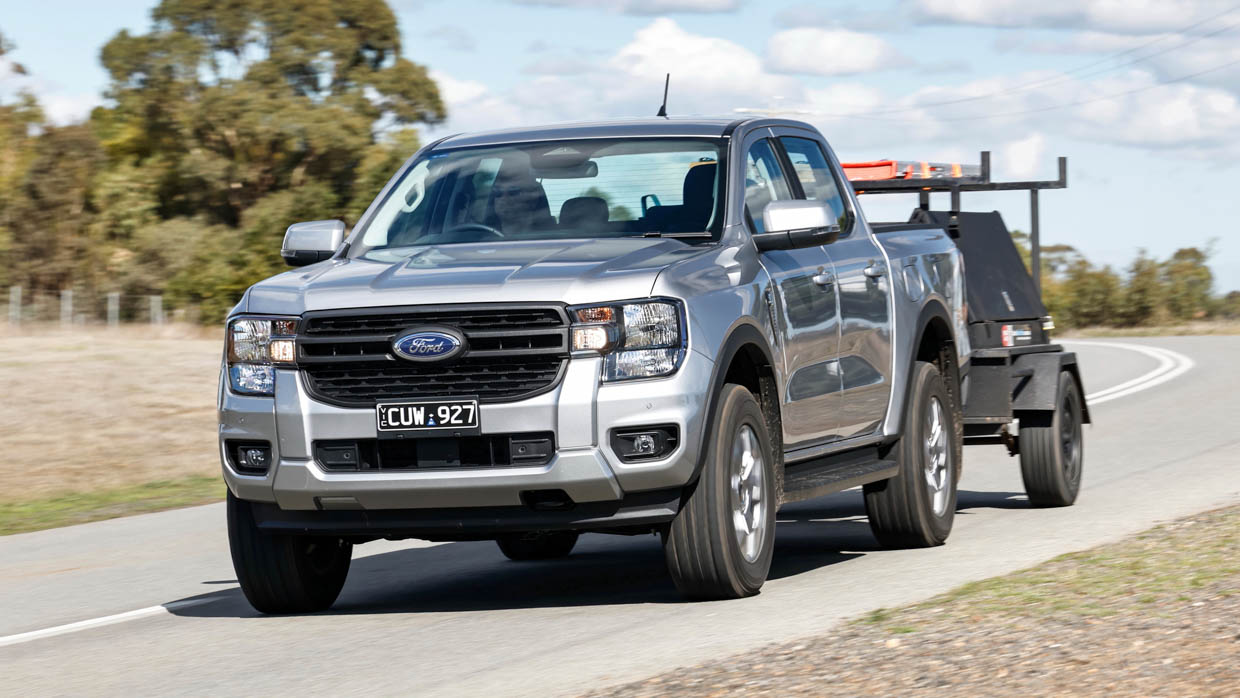
Ford says it’s delivered a petrol-electric ute with more power and more torque while offering better fuel economy than any diesel Ranger alternative.
Towing, payload and off-road ability are, Ford says, key to the Ranger PHEV…which is a similar song that GWM was singing at the launch of its Cannon Alpha PHEV competitor.
So, what’s the why for this model? To set the scene, we thought it would be prudent to provide some ownership stats. Ford has collected data from over 10,000 Ranger owners’ use patterns, which starts with the official suggestion that 59 percent of owners use 4A mode (four-wheel-drive Auto.)
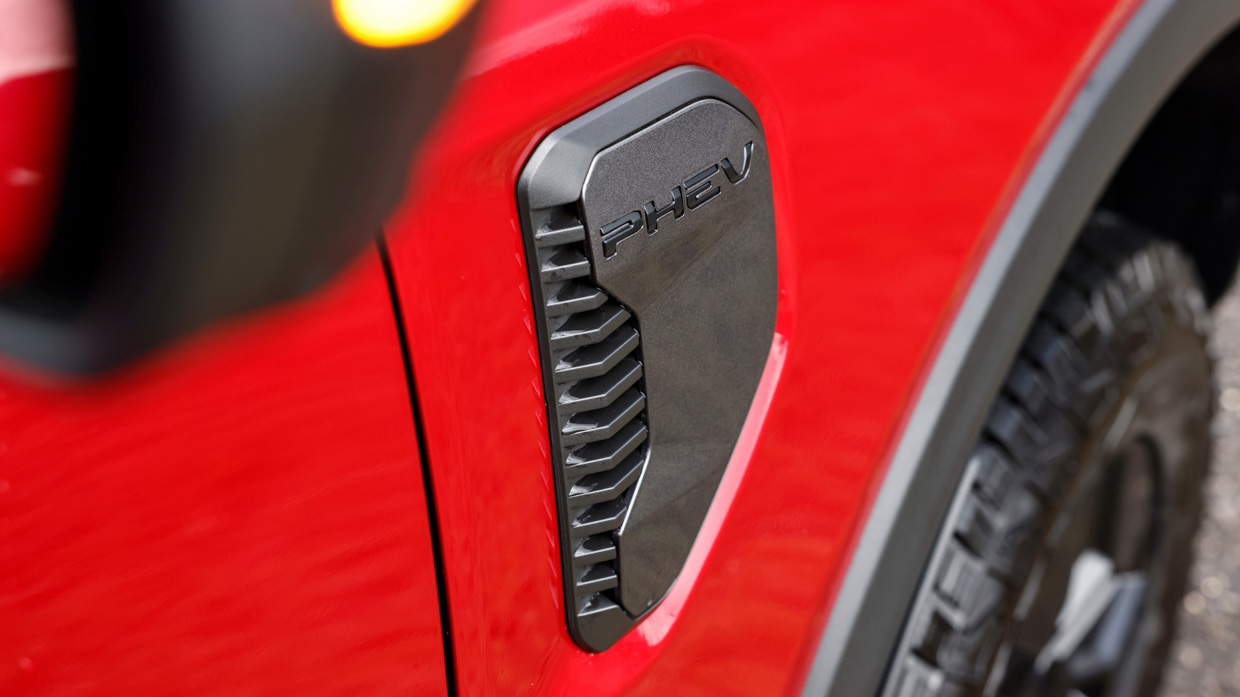
A further 45 percent of owners have engaged 4×4 high-range, while 11 percent used low-range 4×4, which is much lower figure than we expected.
What this really shows what the majority of end users are doing with these vehicles; sticking to dirt roads or sand driving when out exploring. Something we found extremely interesting, too, is that 45 percent have used the factory rear-locking differential.
But the biggest number relates to towing, with 80 percent of Ranger owners hitching up something to tow during their ownership.

So simply using these stats, it’s easy to determine Ford’s design approach for this PHEV ute. It has to be able to tow at a class-matching number (3500kg), while offering decent GVM (3500kg) and GCM (6580kg). Payload is up to 973kg (in XLT trim).
It has to be able to go off-road, especially as half the owners tend to use the differential lock when venturing off into the elements. And it also has to be comfortable, something the diesel-powered Ranger does really well.
So why a PHEV? Because 518,2421 Rangers have been sold around the world, making it the second-best-selling mid-size 4×4 ute. It’s a vehicle sold in over 180 markets and on every continent except Antartica. Ford even declared a record year for 2024 selling 38,945 globally, which is 12 percent up on 2023 figures.

Ranger is also the number two selling ute in Australia, so this PHEV model makes sense as the numbers are there. But it also has a big job to do with reputation on the line in a vastly growing and competitive space.
Starting with off-road credentials, there is no front-differential lock in the Ranger PHEV, and the traction control system doesn’t have a Rock-Mode like the Raptor does.
Rival GWM Cannon Alpha takes the lead when it comes to off-road ability out of the packet with front and rear lockers and a more aggressive traction control system.
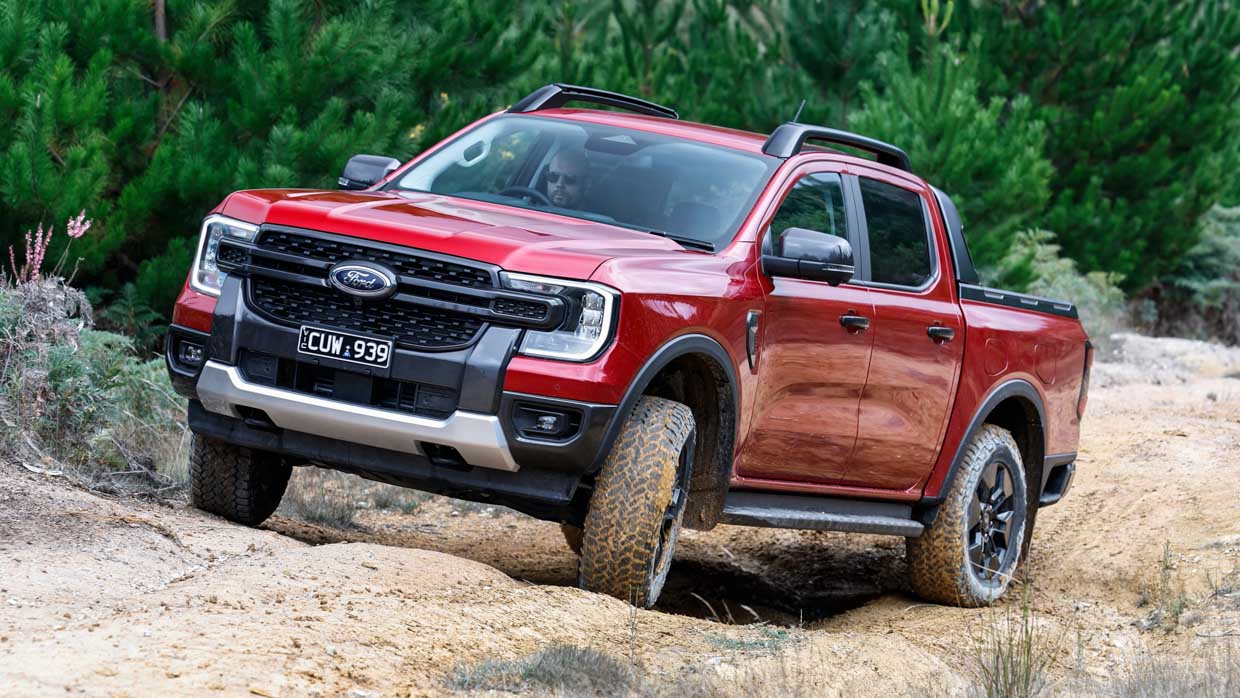
Traction control is not cut to the Rangers front axles when the locker is engaged, at least, which is a nice touch when it comes to off-road ability. Having additional traction at your disposal, while retaining the ability to steer easily is just what you want.
Unlike the coil-sprung Cannon Alpha, the Ranger PHEV has stuck with traditional leaf springs in the rear. But while the GWM doesn’t (yet) feel like a finished vehicle, Ford Ranger PHEV, at least in the Sport variant ($75,990 list) we tested, does feel much more complete.
I’d go so far as to say it feels even more refined than the ICE-powered Ranger line-up, which is the most refined mid-size 4×4 dual-cab on sale in Australia.
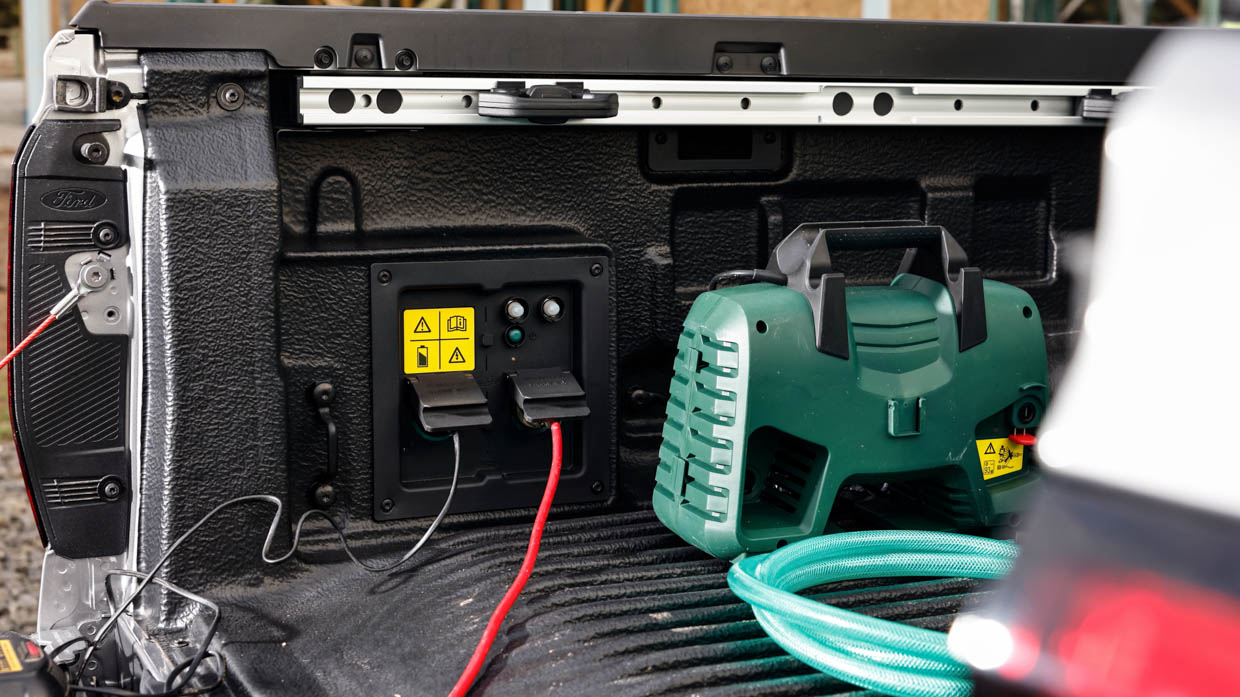
Power wise the PHEV Ranger boasts a claimed combined max output figure of 207kW with 697Nm, underpinned by its 138kW turbocharged 2.3-litre petrol EcoBoost engine: a first cousin to the engine used in the Ford Mustang (among others.)
Then there’s an additional 75kW electric motor paired to an 11.8kWh battery mounted underneath the tub area, directly to the chassis (an important point to note, which we will elaborate on later on). A 70-litre fuel tank is also standard fitment.
Kudos to Ford for managing to keep a spare wheel and tyre in the more traditional spot mounted under the tray, even with batteries occupying the vast majority of this space. It naturally reduces ground clearance, but it’s a neater solution than others. GWM (with its ute’s spare in the tub) please take note…
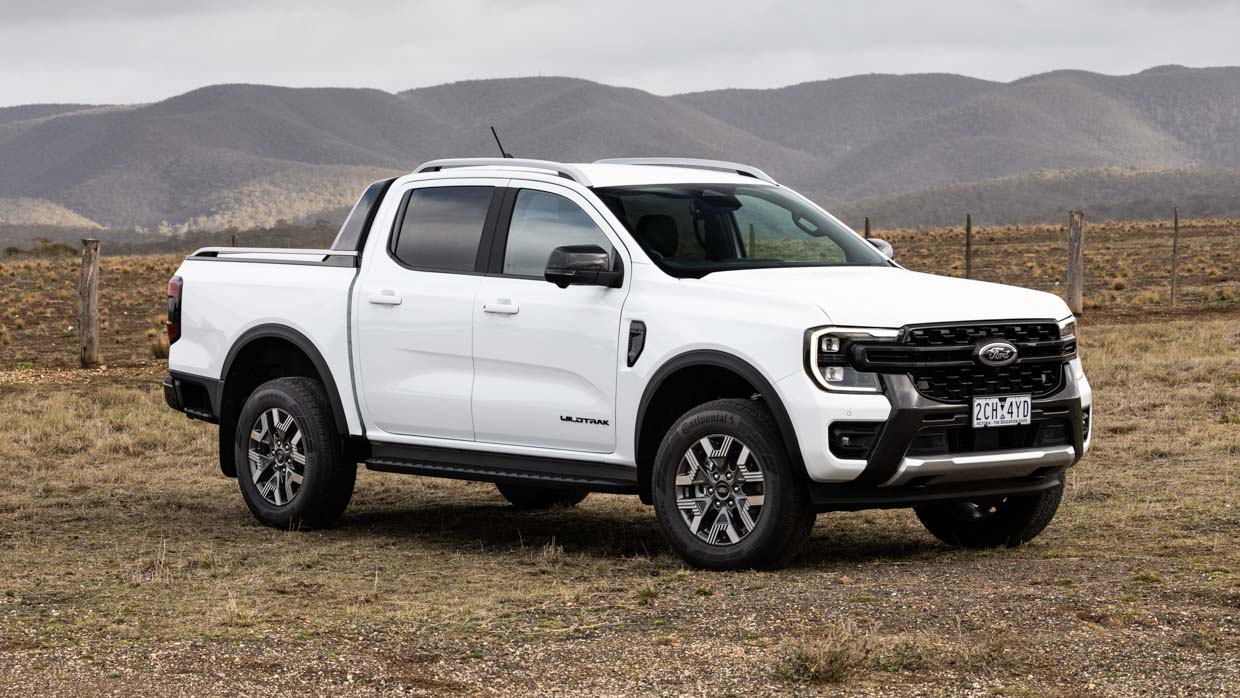
It’s a surprise to nobody, considering how many Ranger owners tow, that Ford has included their same towing technology featured in both the F-150 and diesel Ranger.
This suite includes Pro-Trailer Back Up assistance on top spec models (optional on Sport), Dedicated Tow/Haul mode, Integrated Trailer Brake Control, Trailer Sway Control, Trailer Blind Spot Monitoring, Trailer Light Check and the information Towing Checklist.
That’s quite a lot of technology that is genuinely helpful in the real world. I’ve said it before, and I’ll say it again, towing is serious business. This is the kind of tech that will help save lives.

Where I can see room for improvement for the Ranger PHEV though, is the fact there’s no fast charge battery system. This vehicle is designed to be charged at home overnight on a 10amp socket, from a supplied 8.0amp charger. You can connect it to some public chargers, but you’ll be wasting your time really.
Mode wise, the selection includes ‘Auto EV’ that’s ideal for daily driving, ‘EV Now’ for all-electric drive, ‘EV Later’ which saves battery and electric drive for a later date, and ‘EV Charge’ where the battery is forced charged from the engine.
When driving in EV Charge Mode, it took about two hours to replenish the battery system, which Ford claims has an EV range of 49km – half that of key competitors. We did play around with this during the launch event, but will hold back on providing an tested figure here until we can get it into the Chasing Cars garage.
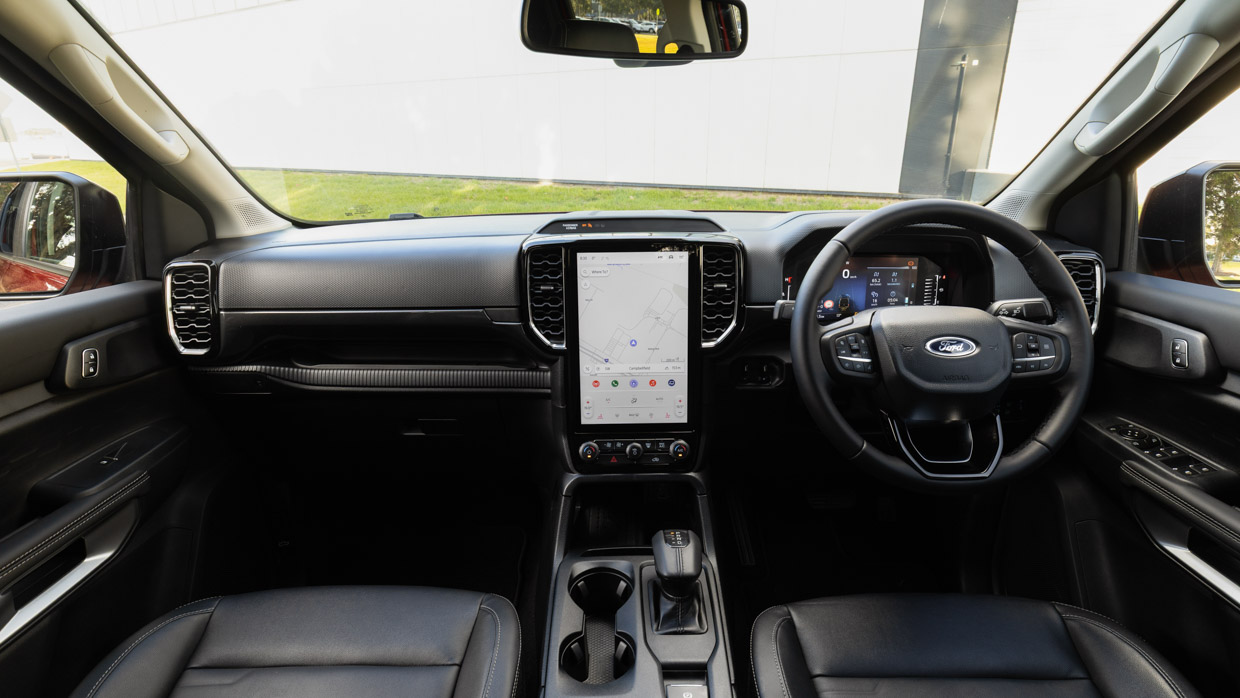
In the transmission department, there’s a new Hybrid Transmission (MHT) unit that integrates an E-Motor between the engine and transmission. With 10-speeds available, you have a gear ratio for all occasions, especially when combined with low-range reduction available in the transfer case, which seems to take a little while longer to engage than a diesel Ranger.
Now, this is a big one – if you remember a few paragraphs earlier, we mentioned the EV battery is directly chassis mounted, not tub mounted. For reasons surrounding vital factory wires, sensors and PHEV fuel venting system requirements, Ford is not recommending the installation of an aftermarket canopy service body or tray.
Rivals? GWM is happy for you to do so with the Cannon Alpha, but BYD says it will void your warranty if you attempt this modification. So only one-from-three manufacturers are on-board. This is a big concern that we hope will change in the future.

Now, Ford didn’t say it will void the warranty, rather that if a warranty issue occurred to any system that is related to the fitment of an aftermarket tray or canopy, things would get awkward for you at the warranty claim desk. For now, we wouldn’t attempt it.
This is an oversight in my opinion, as ute owners love to modify their vehicles hate being told they can’t. This fact alone will hurt Ranger PHEV sales until a Ford developed solution is made available. No tray or canopy package from Ford has been promised at this stage, fingers crossed they do offer a solution.
It has been confirmed that a full suite of off-road accessories will be factory offered, but these are in the process of being finalised and Ford wouldn’t dive into this further. I’d assume Ford’s partnership with Australian 4×4 accessory giant ARB would likely continue, however tweaks are still needed it seems.
Overall, I can’t really see what problem this vehicles solves. The Ranger PHEV is a hybrid of a hybrid. For my own needs it doesn’t offer enough EV range to get to work. The BYD Shark 6 just does, and the GWM Cannon Alpha will comfortably get me to the Chasing Cars office from my mountain perch.
For many a V6 diesel Ranger will make more sense. And the spare change of at least $3150 (depending on PHEV specs) goes some way towards a 12V battery system for camping and powering tools. Which is the main ace up the Ranger PHEV sleeve, a factory-provided rechargeable battery bank for camping requirements and powering tools.
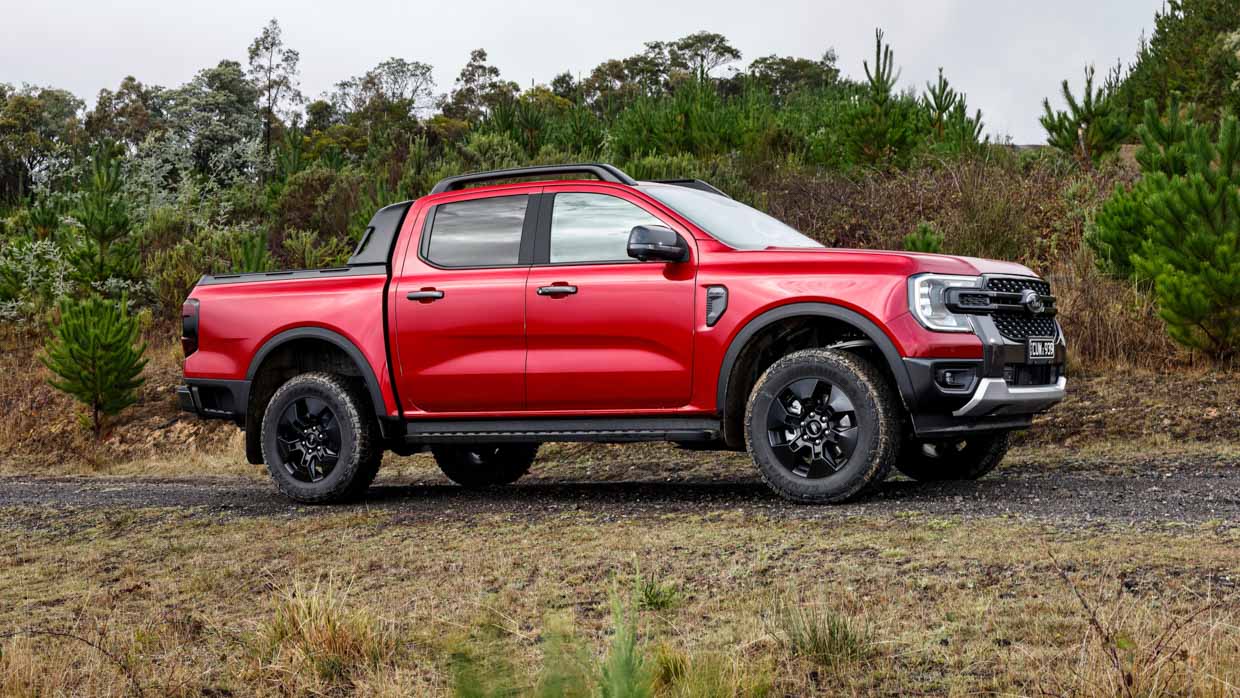
It must be said though, the PHEV Ranger does stay true to DNA, and it still feels and drives very much like a Ford Ranger, which for a long time has been the best road handling ute on the market. So this PHEV Ranger it’s true to form.
But, geez, the competition is nipping at Ford’s heels, with better specs and lower pricing after comparing apples with apples. With this emerging wave of PHEV petrol-electric utes, we’re certainly living in increasingly interesting times.
Zeekr 7X 2025 review
4 months ago

Another premium Chinese EV for Australia? Zeekr says “yes” with the handsome 7X, arriving locally in the coming months. Should you consider it?
Good points
- Smooth, refined powertrain
- Ultra-fast charging speeds
- Quiet and plush cabin
- Comfortable front seats
- Reasonably intuitive tech
- Handsome, subtle styling
Needs work
- Ride needs an Aussie retune
- Very substantial mass
- Steering lacks feel
- No available third row
- Limited brand recognition
- Some safety tech not confirmed
If you haven’t heard of Zeekr, or seen one of its nine ‘houses’, ‘stores’ and ‘pop-ups’ that this Chinese marque has so far established across Australia, odds are you will notice it soon.
If you think of Volvo as the distinctly ‘European luxury’ brand of Chinese conglomerate Geely Automotive Holdings, Zeekr is the ‘Chinese luxury’ arm—it’s not trying to pretend to be a Euro brand or borrow styling cues from its Scandinavian cousin.
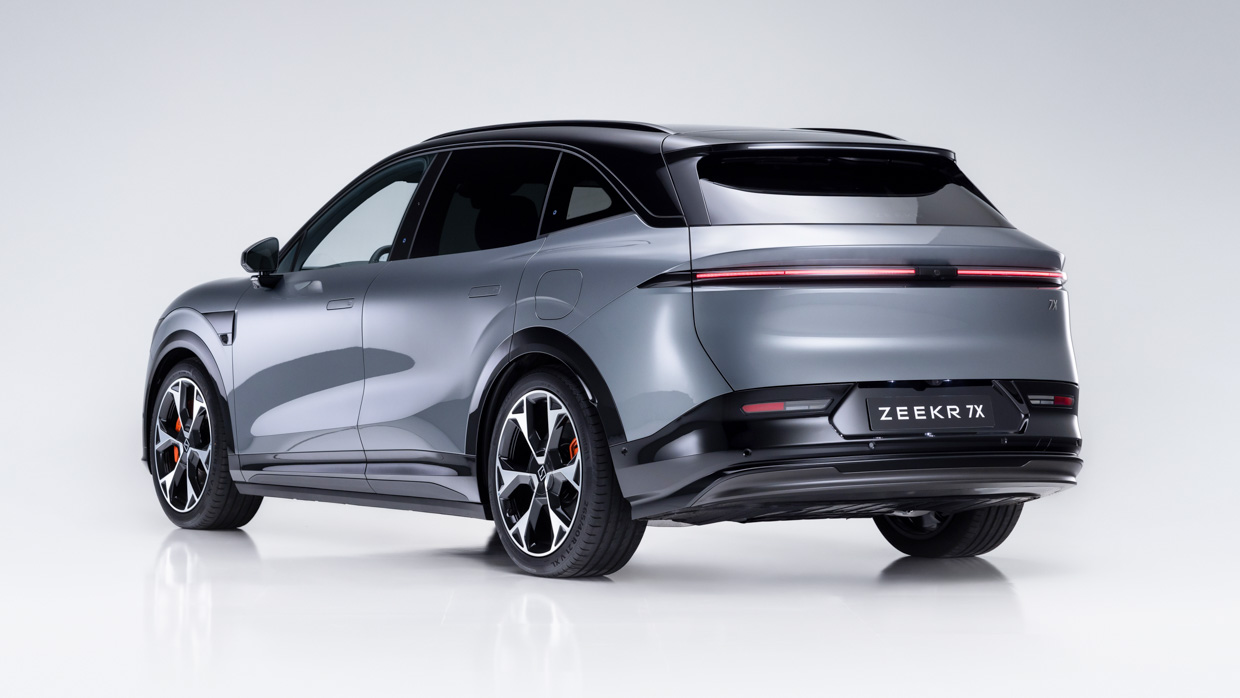
Currently, Zeekr’s Australian lineup is threadbare, consisting only of the X small luxury SUV (from $49,990) and the lush 009 minivan (from $134,900). What’s missing from the all-electric range is a midsize SUV, which is where the majority of Australian demand sits.
That problem will be solved in short order with the arrival of the Zeekr 7X – a medium-sized crossover that is marginally bigger than target number one: the Tesla Model Y (from $58,900 plus on-road costs).
But while Zeekr openly acknowledges Tesla’s dominance in the Australian market, it believes there is space for the roomier, plusher 7X to sit a little above it in the price stakes.
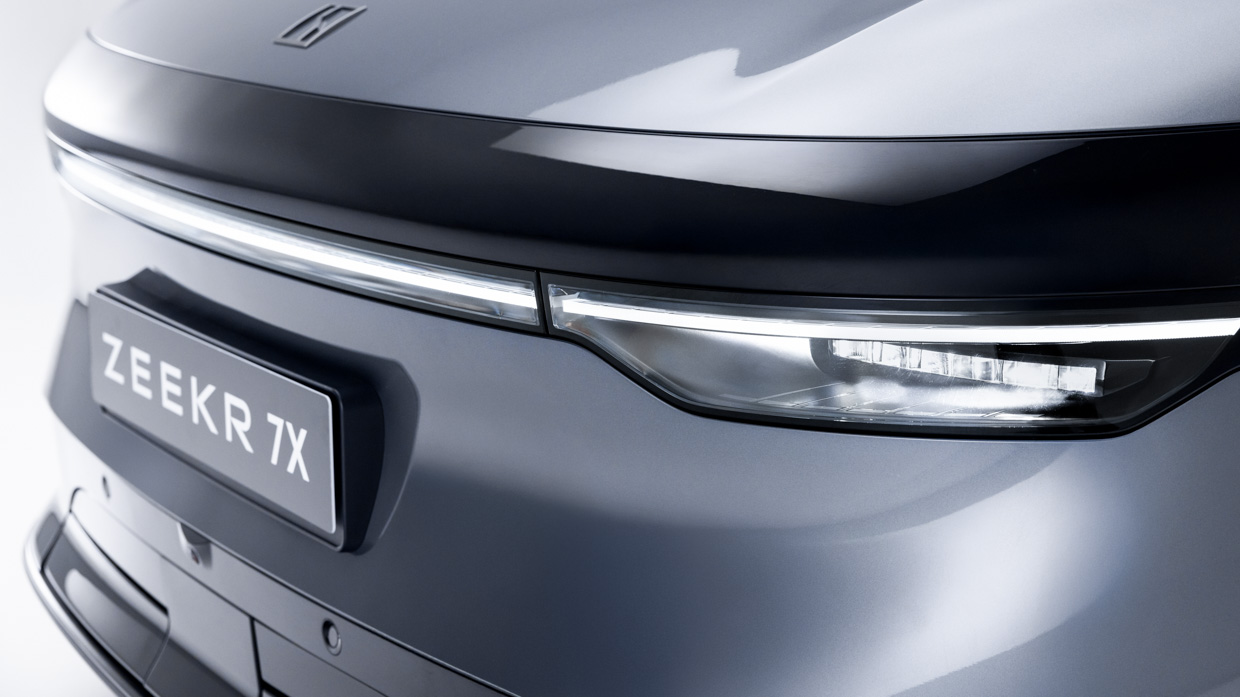
With promises like air suspension, nappa leather-lined interiors and sophisticated cabin tech, the 7X certainly appears to be positioned at a higher level of luxury than the Tesla.
Chasing Cars travelled to Zeekr’s home town in Hangzhou, China, to sample the 7X—and other vehicles the marque is considering adding to the local line, including the 007GT sports wagon and a rebadged version of the Lynk & Co 900 three-row SUV.
With Australian pricing expected to kick off around 15 percent higher than Tesla, should the Zeekr 7X be on your radar once it rolls into Zeekr’s retail concepts? Let’s find out.
What are the Zeekr 7X’s features and options for the price?
In China (and in some European countries), the Zeekr 7X is sold with three grades.
The first is the Premium RWD, which combines a 71kWh lithium iron phosphate (LFP) battery with a 310kW/440Nm rear motor and 480km WLTP range claim.
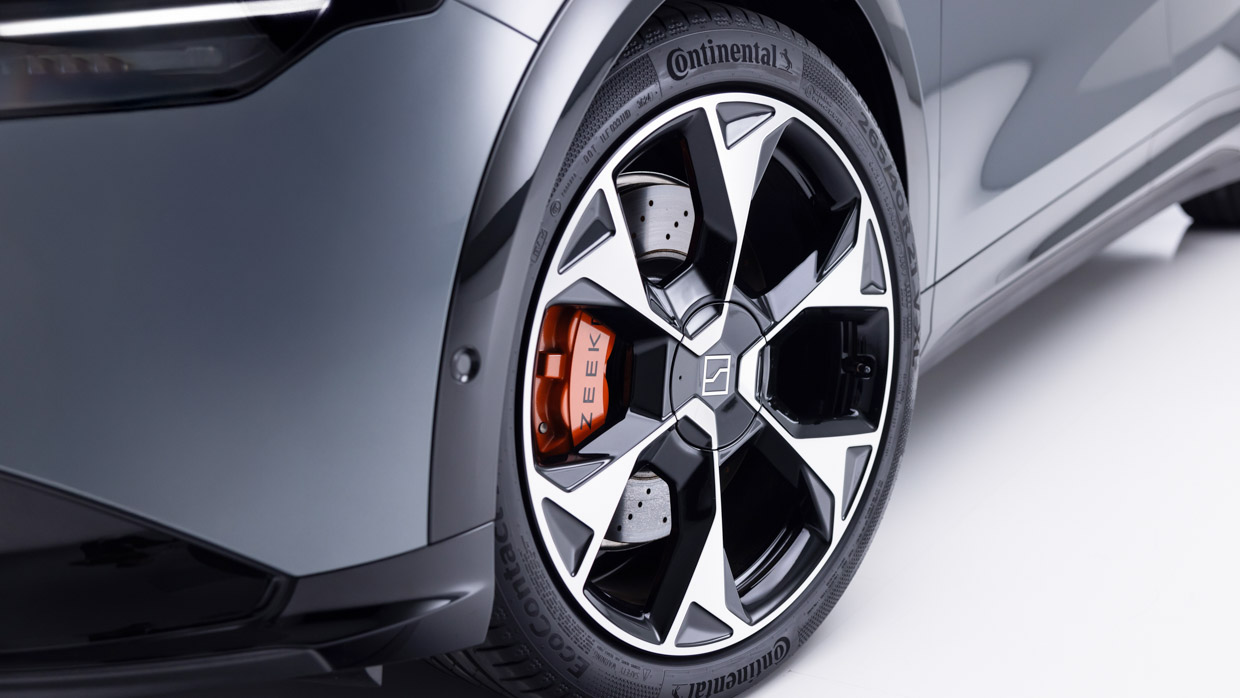
From there, it is a step up to the Long Range RWD grade, which retains the same 310kW rear motor but utilises a 94kWh nickel manganese cobalt (NMC) battery to up WLTP range to 615km – a substantial 28 percent leap.
Finally, the Performance AWD trim keeps the 94kWh NMC battery, while adding an additional front motor to up combined outputs to 475kW/710Nm, while WLTP range falls to 543km.
Standard equipment across all 7X grades includes the following features:
- 19-inch alloy wheels (20s and 21s are optional)
- Matrix LED headlights
- Leather upholstery
- 14-way power-adjustable front seats with heating, cooling and massage functions
- 21-speaker premium stereo (co-developed with Yamaha)
- Integrated dash camera
- Interior camera for facially-recognised driver profile
- 16-inch infotainment touchscreen
- 13-inch digital instrument cluster
- Wireless Apple CarPlay and Android Auto
- Dual 50-watt wireless smartphone chargers
- High-output USB-C charge ports
- 5G connectivity to support over-the-air updates and an app store
- Companion smartphone app to control the vehicle
- Power tailgate

In the Chinese market, optional extras are available in various packages that include the following features:
- Air suspension with continuously adaptive damping
- Akebono performance brakes
- 13-inch rear entertainment screens
- Nappa-grade leather upholstery
- Executive rear seating with additional recline
- Electronic door actuators (with powered opening and closing)
- Tow bar
Zeekr has not yet revealed how many trim grades will come to Australia, but there is likely to be at least one rear-wheel drive variant as well as the Performance AWD.
If specification remains similarly as generous as it does in China, pricing could possibly sit between $70,000 and $90,000 before on-road costs in Australia.
How does the Zeekr 7X drive?
While in Hangzhou, Chasing Cars had the opportunity to test a Long Range RWD variant on a generous public road loop, as well as a Performance AWD model on a closed gymkhana that involved high-speed cornering and full-force acceleration and braking.
Both of our test vehicles utilised the 94.0kWh NMC battery, the size of the pack contributing to the 7X’s substantial mass (up to 2535kg in fully-optioned, dual-motor guise).
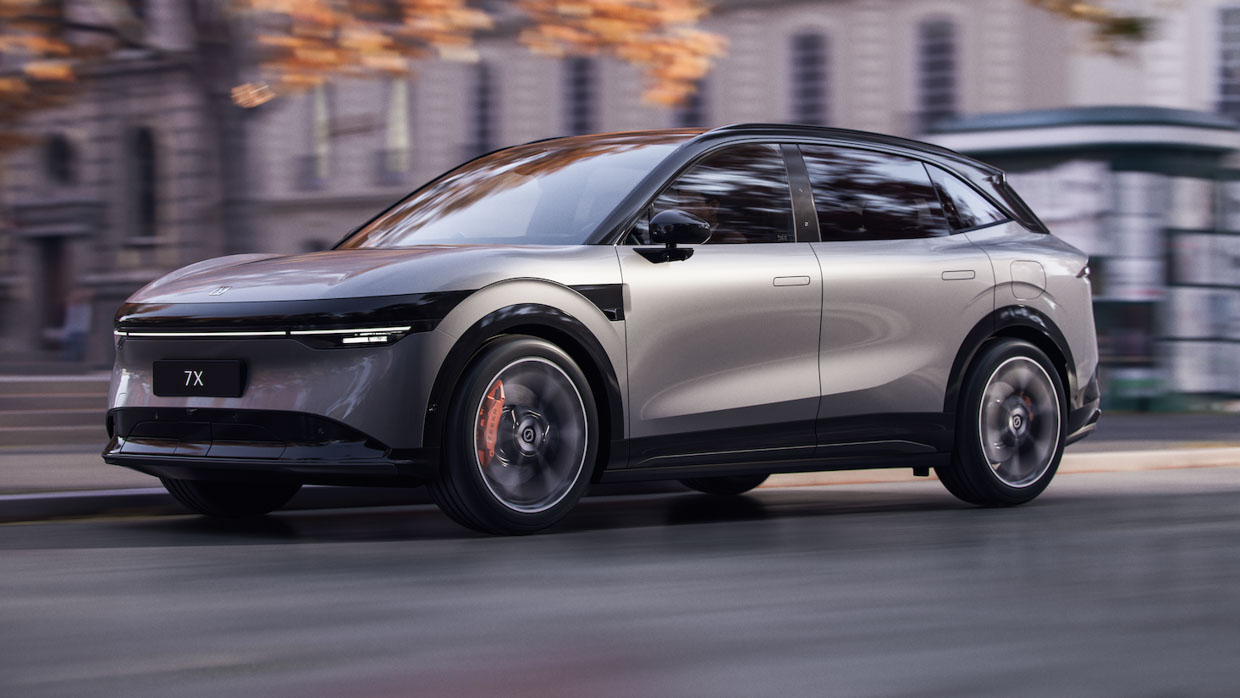
Also contributing to the weight is the Sustainable Experience Architecture (SEA) platform, which Geely asserts has very high rigidity and advantageous crashworthiness characteristics. SEA is also generating a wide range of vehicles that are arguably overweight.
That said, the vast mass of the 7X is not noticeable in everyday driving. Operated gently and gracefully, the 7X has a plush and approachable demeanour. It certainly feels massy and solid, but immediate and silken motor response keeps it from feeling sluggish.
It is only when you go looking for the weight that you will find it. The hilarious gymkhana assembled by Zeekr’s race driver team on a gravel-strewn piece of tarmac immediately revealed the 7X’s tendency to buck wildly forward under heavy braking – while there was plenty of body roll to contend with.
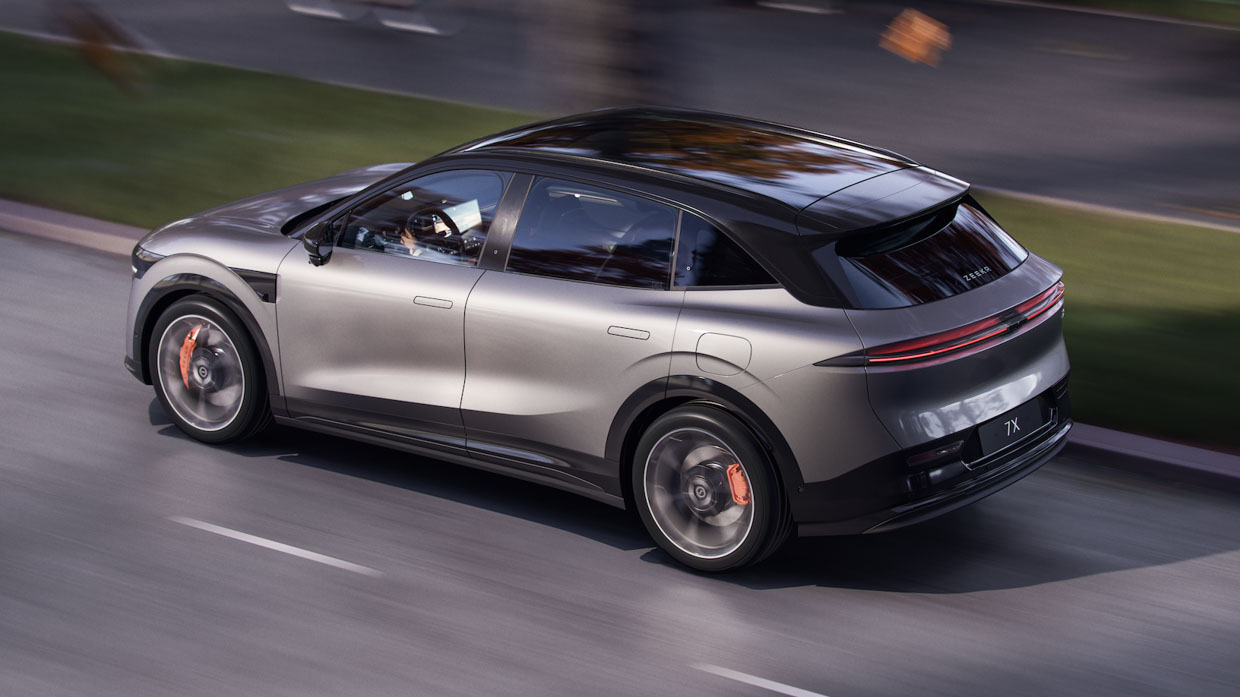
But there’s no arguing that it’s wicked fast in Performance AWD trim as the full force of 475kW/710Nm comes to bear as the throttle is depressed. Zeekr claims a 3.8 second 0-100km/h acceleration claim for the AWD, which feels accurate.
The single-motor RWD models aren’t quite as quick but they are still rapid, with claims of 5.8 sec with the LFP battery and 5.7 sec with the bigger NMC pack. As is so often the case with electric vehicles in temperate Australia, the rear-drive model is likely to be sufficient for most buyers.
Our road loop was conducted in the Long Range RWD grade, which demonstrated its affable character in suburban streets and on quicker boulevards (we only reached 80km/h, mind).

It is wafty rather than sportily damped, which will suit many buyers – particularly those with young kids napping in the car.
The vehicle we were testing was equipped with optional air suspension, and selectable drive modes allow the damping force to be altered. Encountering a seriously broken-up section of Chinese road did raise some concerns with the tuning of the ride, which becomes clumsy and uncontrolled over bigger bumps.
Still, Zeekr says that a suspension retune will be performed in Australia, and if that is seen to, we will need to evaluate ride quality on our famously fickle road surfaces.
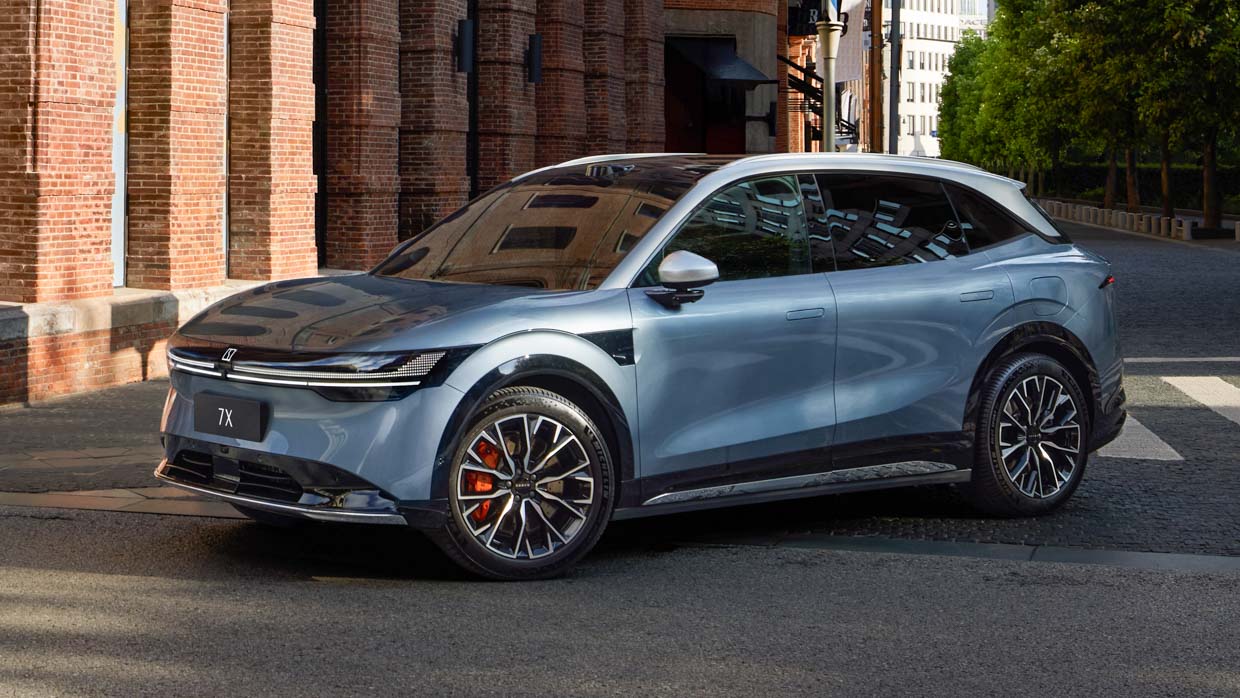
The brakes were well-calibrated, very strong on the gymkhana (with optional Akebonos), and fluid and easy on the road with three levels of regenerative force adjustment.
Refinement was really the order of the day when it came to our test drive. Substantial cabin noise insulation (probably also contributing to the weight) creates a really serene feel inside.
What is the Zeekr 7X’s interior and tech like?
If you’re familiar with the Tesla Model Y’s super-minimalist cabin, the Zeekr 7X feels like a much more traditional vehicle. Zeekr’s goal: to make it feel like a normal car, where the energy source (whether combustion, hybrid or electric) is not immediately discernible.
That has worked, in part. You can certainly tell that you aren’t in a Toyota or a Hyundai (or a German luxury car), as like other Chinese premium vehicles, there is a certain generic feel to the cabin plastics in the 7X that seem to be repeated from brand to brand.
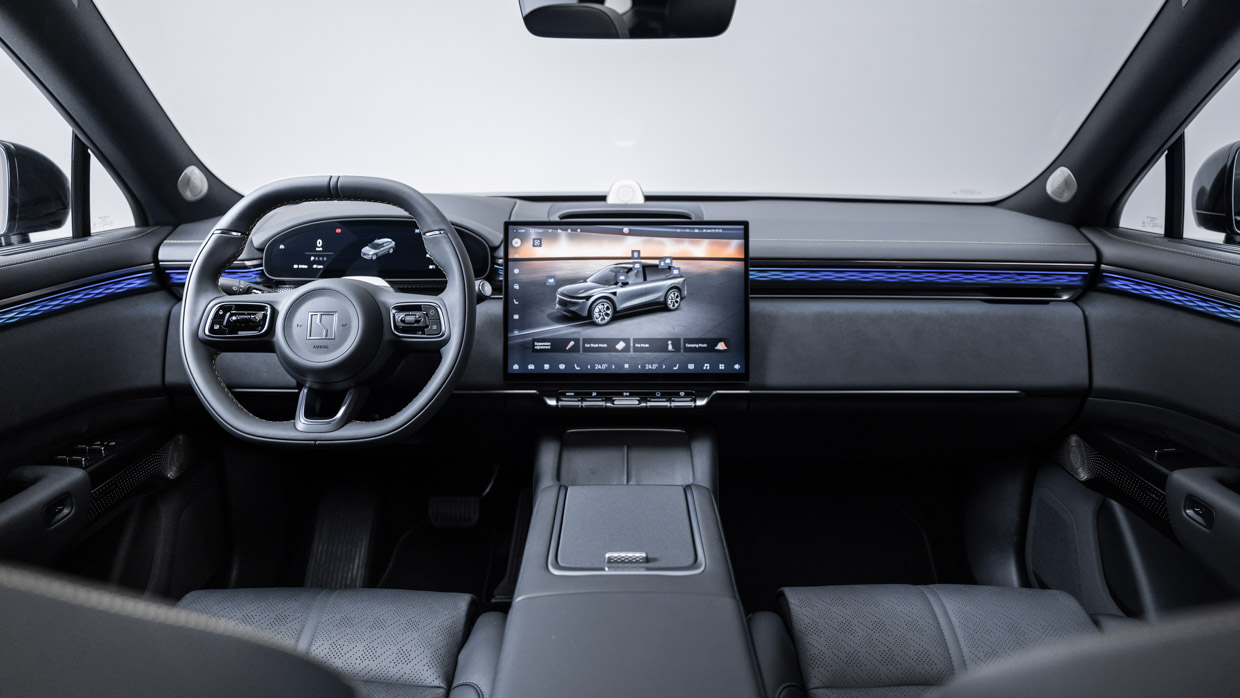
Certainly, though, the ergonomics are recognisable, with stalks, screens and buttons (hallelujah!) all to be found in expected places. We still appreciate a discrete driver’s instrument cluster showing speed, trip details and the like, and the 7X provides, with a crisp 13-inch unit beneath a binnacle.
Next to that screen sits a big and bright 16-inch unit with a modern processor behind the scenes, meaning the graphics load instantaneously.
CarPlay and Android Auto is supported, while what we could make out from the Zeekr infotainment was clear. English wasn’t available; it will be in Australia, of course.
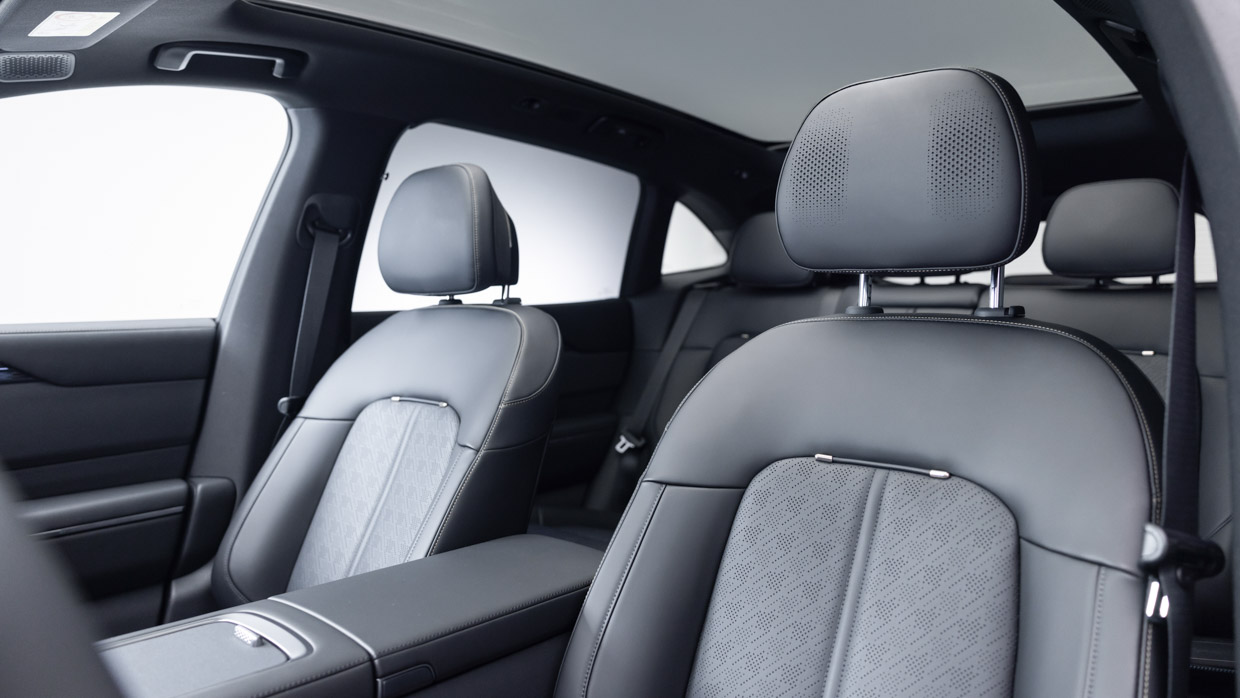
Our test car’s white and grey nappa leather interior was attractive without being too in-your-face (though black—and much brighter—cabin colours are optional in China). The front seats are highly customisable and comfy, with ventilation, heating and massage included.
We won’t lie: it’s nice to have indicator and wiper stalks when you drive, as well as hard keys on the steering wheel to alter common functions without having to think about it. The 7X deliberately retains all of these items.
A novelty is the electric operation of the doors—a feature that is coming to Australia. Tapping the handle opens the door, while stepping on the brake closes the driver’s door (subtle buttons do the same for the others).

The back seats are voluminous thanks to the 7X’s near-three metre wheelbase: headroom, legroom and toe-room is all limousine like. The standard bench package is fine; in China, executive rear seats are available with huge recline, with tray tables, but this option is not likely for our market.
One complaint: there is no available third row, despite the length of the 7X probably meaning there would be space for a compact wayback seat; that said, Zeekr is considering its three-row options for Australia and is firming on a plan to rebadge the Lynk & Co 900, which does offer this layout.
Is the Zeekr 7X a safe car?
Despite now being on sale in Europe, the Zeekr 7X has not yet been independently crash tested – however, the crash and safety performance of other vehicles that share the 7X’s core SEA platform has been very encouraging.
Certainly, Zeekr expects to receive a high safety rating when the 7X is eventually crashed by a Western testing body – likely Euro NCAP – thanks to the SUV’s so-called ‘Dome Armour’ construction.
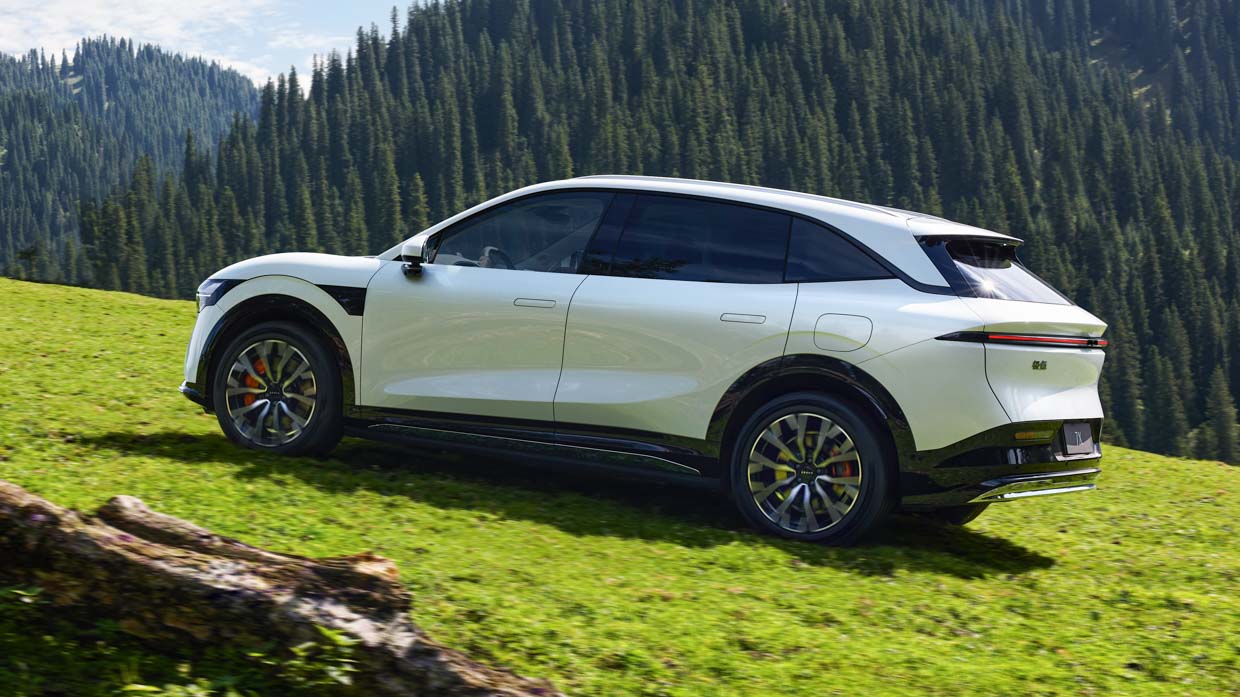
In China, the 7X is equipped with a vast array of hardware sensors and multiple cameras to inform the standard adaptive safety suite, all powered by an Nvidia Orin-X2 chipset. However, the distinct roof-mounted lidar pod is unlikely to be seen on Aussie cars, because self-driving laws are perceived to be a long way off.
The rest of the sensors will probably be retained, however, to provide expected systems like autonomous emergency braking, strong adaptive cruise control and lane keep-assist, blind spot monitoring, traffic sign recognition, and rear cross-traffic alert.
We didn’t feel the need to turn off the lane-keep on our road drive; it seemed well-tuned. But assessment of the sophistication of the 7X’s safety tech will need to wait for an Australian drive.
What are the Zeekr 7X’s ownership costs?
Because the 7X is sold in Europe, we are in possession of WLTP range ratings for the vehicle. Helpful, as China’s CLTC ratings scheme is usually far too optimistic for the kind of driving seen in Australia.
Claimed efficiency is only acceptable, but Zeekr’s fitment of relatively large 71kWh or 94kWh usable batteries means that driving range is quite usable. Efficiency for the three grades is rated as follows:
- Premium RWD (71kWh LFP battery): 14.8kWh/100km (480km range)
- Long Range RWD (94kWh NMC battery): 15.3kWh/100km (615km range)
- Performance AWD (94kWH NMC battery): 17.3kWh/100km (543km range)
Our road drive in China was more gently driven than our testing in Australia, use that observation to guide your perception of our tested figure of 15.4kWh/100km (implying a 610km range).
It is worth pointing out that only the Premium RWD’s LFP battery is advised to be charged to 100 percent on a regular basis. Like other NMC batteries, the big pack should mainly be charged to 80 percent aside from when you really need it, like on a road trip.
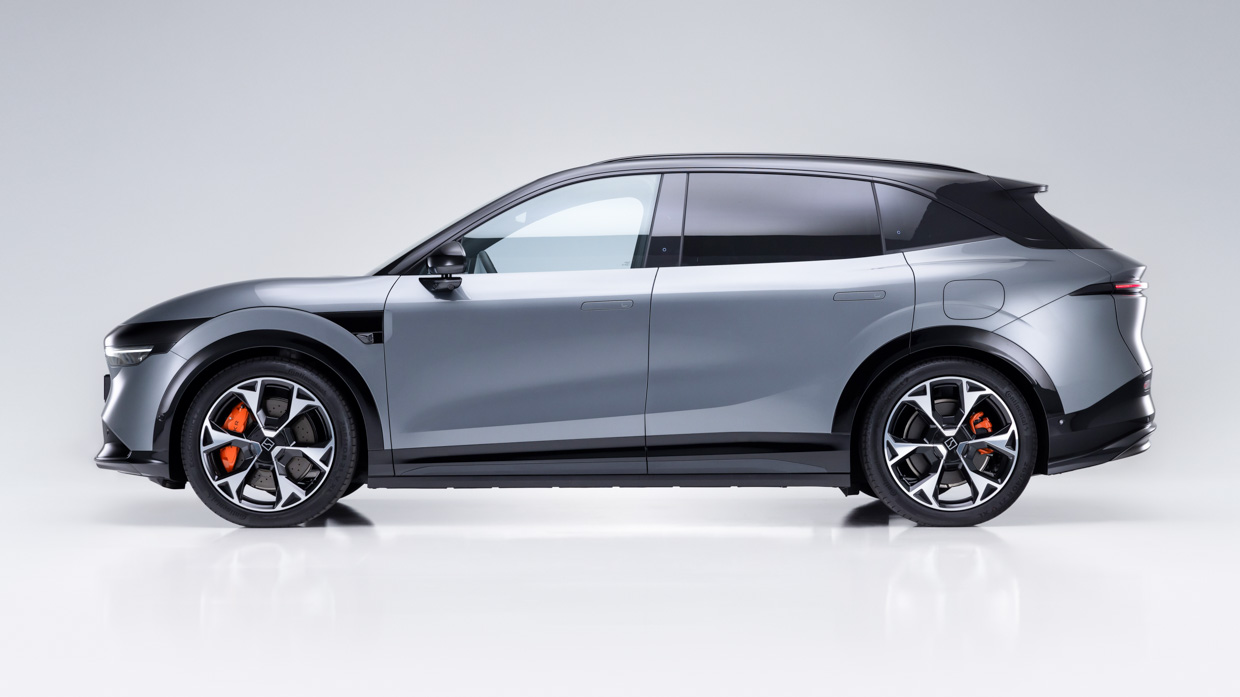
Charging times are outstanding for the Zeekr 7X thanks to a 360kW DC peak charge speed. Australian charging infrastructure generally doesn’t stretch to 360kW, but find a compatible charger and 10-80 percent can be recouped in as little as 13 minutes.
AC charging can be completed at up to 22kW, to suit three-phase home or work setups.
Warranty and service pricing are not yet known for Australia; no spare tyre is included, as is the case with most other electric cars.
The honest verdict on the Zeekr 7X
Our first impression of the Zeekr 7X was positive, though we have our reservations.
This is a refined, quiet, well-equipped electric SUV that can support being priced a little above the familiar Tesla Model Y.
There is no doubt that the Zeekr is more plush and luxurious than the aforementioned Tesla, the BYD Sealion 7, Volkswagen ID.4 and other mainstream electric SUVs.
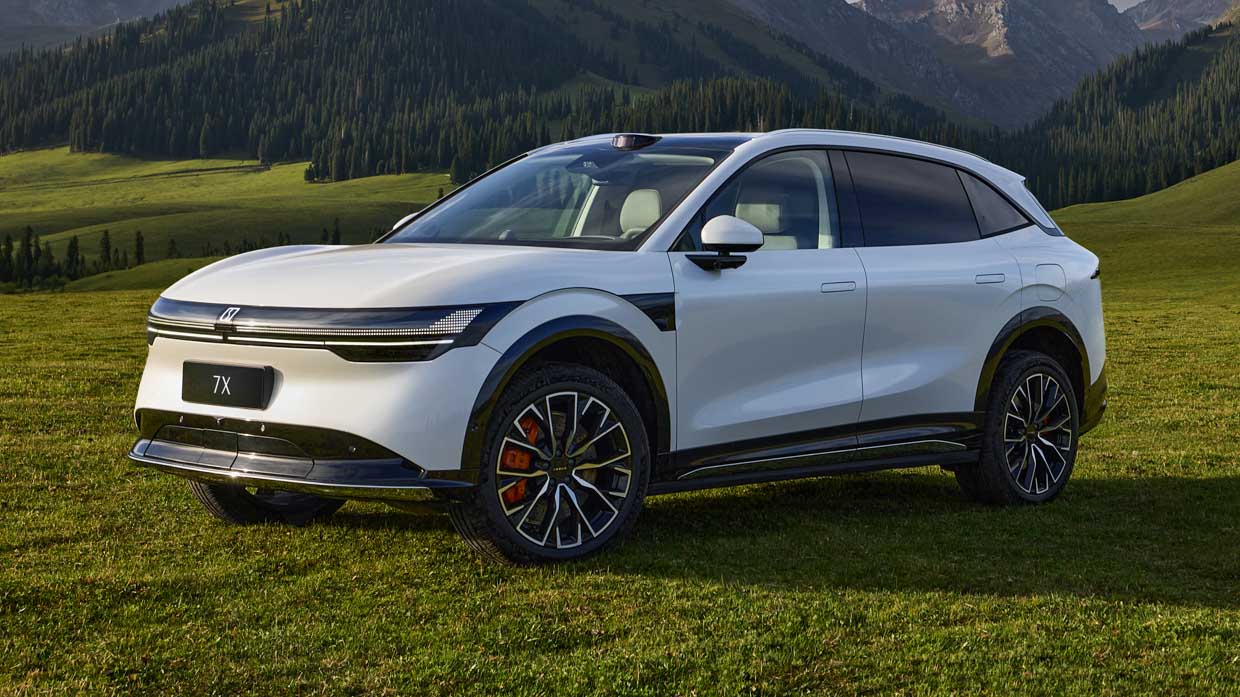
Its dynamic character is generally smooth and confident, though we would support Zeekr conducting an Australian suspension retune as control over bumps doesn’t yet feel sufficient.
Longer-term, it is clear the wider Geely group needs to concentrate on getting burgeoning vehicle mass under control – as this factor blunts efficiency, range, handling, ride and performance.
However, if priced correctly and supported by a growing retail and service network, the Zeekr 7X could become an interesting new option for buyers seeking a plush experience and value in an electric SUV.



